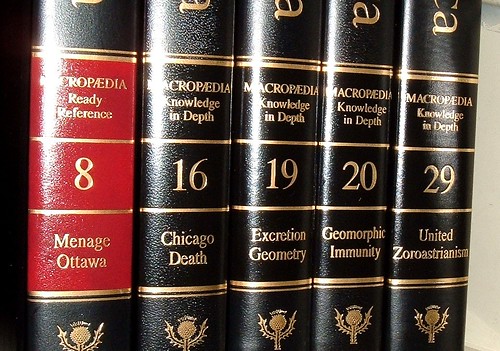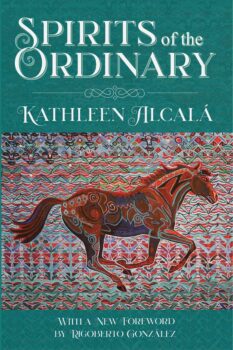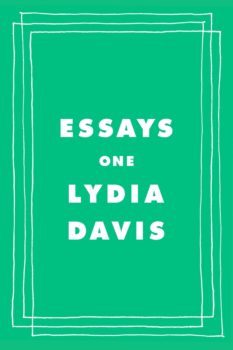Mary Roach is my favorite nonfiction writer—partly because she’s wickedly funny, and partly because we share the same fascinated appreciation for the absurd. I’ve been a huge fan since her first book, Stiff, which is about the various uses of human cadavers. In it and all her other books (Spook, about science and the afterlife; Bonk, about science and sex; and Packing For Mars, about manned space exploration), Roach unearths details that are just too crazy to make up—such as the fact that a dead pope is struck on the forehead with a special hammer to be sure he’s really dead, or that not long ago in Thailand there was a rash of disgruntled wives cutting off their husbands’ penises. And that’s barely scratching the surface. Seriously, if you’ve never read a Mary Roach book, go treat yourself to one right now.
In a recent interview with Robert Birnbaum on The Morning News, Roach discusses research and her discomfort with making things up:
MR: I love archives: the dustier, the better. Also now because of the internet, I still want to find things that are surprising. I am so disappointed when I find out something is already on the internet. So I am going further and further and further into archives to try to find things that people don’t know about—everything is on the internet.
RB: No, I’m not sure that’s true. I’m impressed with Erik Larson, who refuses to use the internet and does his research in libraries.
MR: I once went to a talk he gave on how he does what he does. Somebody said, “How can you describe the corner store in London in 1847? How do you know what was upstairs?” Assuming he was making it up. He said the Sanborn Insurance company went out and documented every street in London: Here’s the year, here’s the address and here’s what it looked like, and here’s who was upstairs, here’s what was down the street. So he had this resource to recreate the street scene. Amazing—and that was just in one example. He probably has 15 resources like that.RB: Readers presume that it is made-up.
MR: I think the reader is just baffled—I was until I heard that. I know he doesn’t make things up I but I never understood how he or any writer—I remember I wrote Stiff, my first book, and I wanted to talk about that guy who put cadavers on a crucifix in his office in Paris—Pierre Barbet—and I wanted to set the scene. He published a book, A Doctor at Calvary—there was a typo and they changed it to Cavalry [laughs]. I wanted to set the scene and all I knew of him was his book and I couldn’t find information about him. I wanted him walking along carrying a briefcase of some kind. a leather portfolio, and I thought, I don’t know if he had a leather portfolio. I was very uncomfortable with it.
RB: Were there catalogs at that time?
MR: But I didn’t know which one he had. So in just two sentences I felt [like] a scammer, making it up.
Even though I’m a fiction writer and make things up—in fact, even though I am a fiction writer because I like to make things up—I understand Roach’s discomfort. When I write nonfiction, I have a hard time hewing to the facts, yet when I write fiction, there are certain things I like to get right: dates of real-life events, prices, geographical locations—things a knowledgeable reader might know. For the fiction writer, these real-world details are the stage setting of your story: get them right, and the made-up parts are more convincing; get them wrong, and your reader will immediately question everything else you say.
This is where I’m immensely grateful to be living in the Internet Era. While writing my novel, I’ve spent far too much time on Wikipedia, of course: where else can I find out whether Post-It Notes had been invented yet (1980, so no), or that the “rabbit” pregnancy test was more likely to be done on frogs, or when that car buzzer that tells you haven’t buckled your seat belt became prevalent? (And I’m not alone: nonfiction writer Peter Gill described his love for the site in The Guardian.)
And I have a folder of bookmarks to help me find other bits of real-world information, like:
- How Much Is It, which tells you how much a dollar (or a pound, or a yen, or a yuan) was worth at any given point in history. So if my character wants to spend $50.00 on a pair of books in 1977, I know that’s over $175.00 in today’s dollars, and that was an extravagant purchase.
- How Far Is It, which tells you the distance between any two points in the world
- The Baby Name Voyager, which shows you the popularity of a particular name over time, as well as where it’s most popular geographically—so you can avoid having a character named Jennifer before the 1930s, for example, when the name was practically non-existent
- The Social Security Administration’s name index, which gives you the most popular names in any given year
- The U.S. Naval Observatory website, which gives the phase of the moon and the times of sunrise, sunset, moonrise, and moonset on any day in history
Okay, those are my secret research sites. Now it’s your turn: what details do you like to get right in your fiction? Where do you go—on the internet or in real life—to research those bits of info?






